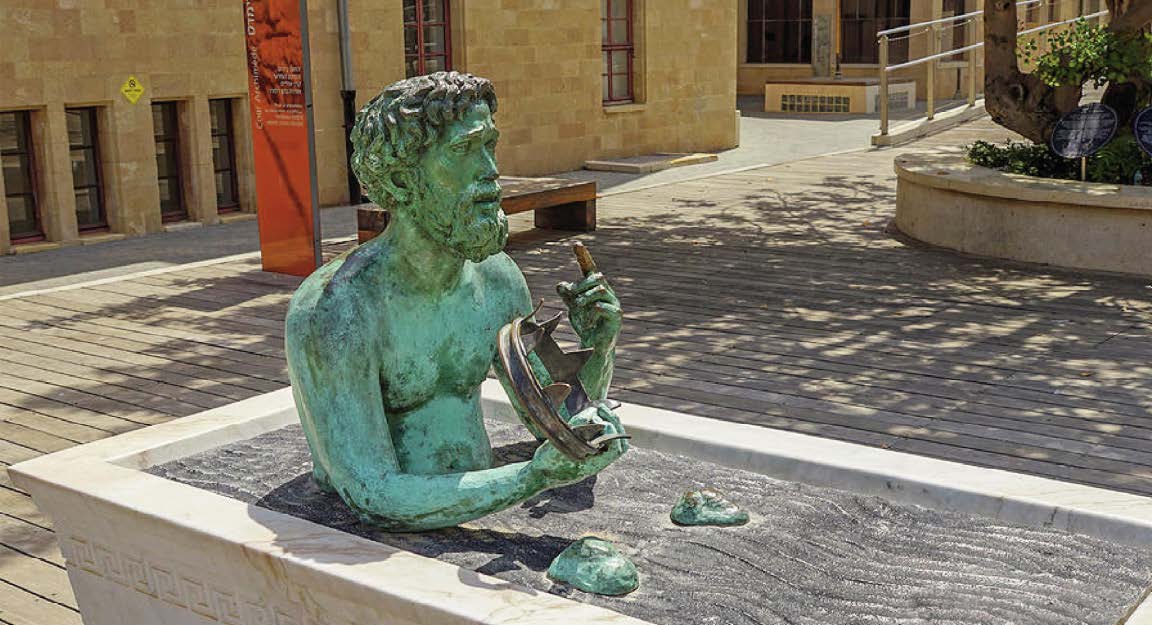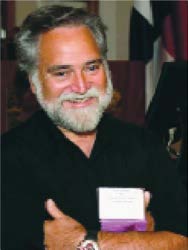ANCORA IMPARO
RICK RADER, MD ■ EDITOR-IN-CHIEF

WATERSHED: Archimedes realized that, because gold weighs more than silver, a crown mixed with silver would have to be bulkier to weigh the same as one composed only of gold — therefore displacing more water than its pure gold counterpart.
I Have Found It!
Most of the time, our "Eureka" or "Aha!" moments don't come when we are diligently searching for them.
I had one the other day and not while I was taking a bath. I was in my garage, trying to get an old car started that was undisturbed for twenty years. I did what good mechanics do, and that was to replace all the old parts that were responsible for it to hiccup and come to life. No hiccup, no dice, no belching and no ignition. I went through the procedure over and over again and nothing made sense. The parts were all new, so where did that leave me? Perhaps I was assuming too much. What if I was negating the logical illogical and what was a new part could have been a bad part? I had my Eureka moment. One of the new parts had to be defective, even though they were new and out of the box. Sure enough, one of the new gizmos was defective and its replacement woke the sleeping beast.
I indicated that the moment came to me and I was not taking a bath. I said that, not because I typically have insights in the bathtub; in fact, I prefer showers. But the statement is a tribute to history's first recorded Eureka moment.
Archimedes was among the greatest scientists of all time. He was a gifted physicist, mathematician, astronomer, inventor and engineer. The king of Syracuse (island off of Sicily) commanded a goldsmith to make a suitable crown for him (the King) to wear. While it was of a magnificent design, the King thought that the color of the crown was suspicious and wanted Archimedes to check to see if it was pure gold as ordered.
Archimedes was perplexed by the challenge. The crown weighed as much as the gold that was given to the craftsman. One day, Archimedes was about to take a bath and he did not notice that the water was already full to the brim. When he slid into the bathtub, a large quantity of water flowed over the top of the bathtub. It hit him. He jumped out of the bathtub shouting, "Eureka! Eureka!" For those of you who can only read the Greek letters over the door of a college fraternity house, "eureka" is Greek for "I have found it." What he "found" was that different metals of the same weight have different volumes. Objects, put in water, will displace water. The displaced water will be equal to their volume. The craftsman used inferior metals that were equal to the weight of the gold. So, before you relegate what is now known as the Eureka moment to a distant bathtub, know that the Archimedes principle has served as the basis for studies in bone density, aging studies and medical-related studies involving fluid dynamics.
One can imagine Archimedes sitting in his bathtub, watching the water spill onto the floor and thinking, "That's funny."
But that line is credited to another amaz ing scientist and leading science fiction writer, Isaac Asimov, "The most exciting phrase to hear in science, the one that heralds new discoveries, is not 'Eureka" but 'That's funny."
Most of the time, our "Eureka" or "Aha!" moments don't come when we are diligently searching for them. While it happened in the bathtub for Archimedes, Newton experienced it while wandering an apple orchard. Arthur Fry, (the inventor of Post-it notes) had it while pulling paper off a wall that failed to stick as he had hoped. For George de Mestral, a Swiss engineer, it happened from a walk in the woods with his dog in 1941. Upon their return home, de Mestral noticed that burrs had attached themselves to his pant and to his dog's fur. He carefully examined the burrs and it led to the discovery of Velcro. Burrs have attached themselves to pants and fur for centuries but for one person, it was an "Aha!" moment.
In a recent article in the journal, Brain World, they shared that "There are many words and terms that we use to describe good ideas – "sparks, flashes, light-bulb moments; inspirations and innovations; muses and visions. But what makes these moments so mystifying is that they usually materialize abruptly, without warning and seemingly out of thin air."
For over a century, researchers have attempted to study the phenomenon of "Eureka" or "Aha!" moments. We now understand that we require more neural processes operating at different time scales to achieve a "flash point of understanding" than we use when solving a problem analytically or methodically. Using advanced functional magnetic resonance imaging and electroencephalographic sensors, we know that "gamma activity" (and I don't want to lose you here) coming from the brain's right hemisphere (where we begin to assemble parts of a problem and create associations) is working overtime. This activates a neural pathway that spikes new ideas.
The term "Aha!" moment came into prominence in 2012 when MerriamWebster released their annual list of new dictionary words. Interestingly enough, "aha moment" made it above "bucket list", "game changer", and "sexting".
And while she is not a neuroscientist, Oprah Winfrey has a very compelling and thought-provoking explanation of what exactly is an "aha moment."
"The thing about an Aha! moment is that "The disability movement has had many 'Aha!' moments, most recently 'Nothing about us without us.'" you think you've never thought of it that way before… But you can't have an 'aha' unless you already knew it. So the aha is the remembering of what you already knew, articulated in a way to resonate with your own truth. So, the aha isn't somebody teaching you something; the Aha! is somebody helping you to remember."
Research from Reber (Current Directions in Psychological Science) assumes that there are four parts of an "Aha!" moment. First, the "Aha!" moment appears suddenly; second, the solution to a problem can be processed smoothly; third, the "Aha!" moment elicits positive affect; fourth a person experiencing the "Aha!" moment is convinced that a solution is true.
The disability movement has had many such moments. First, it was, "It doesn't have to be like this." Shortly after that was, "We have many voices." That was followed by "Our stories must drive the message," that was followed by, "We can do this," and most recently, "Nothing about us without us." What amazes me is, how did they all fit into that bathtub? •

ANCORA IMPARO
In his 87th year, the artist Michelangelo (1475 -1564) is believed to have said "Ancora imparo" (I am still learning). Hence, the name for my monthly observations and comments. – Rick Rader, MD, Editor-in-Chief, EP Magazine Director, Morton J. Kent Habilitation Center Orange Grove Center, Chattanooga, TN